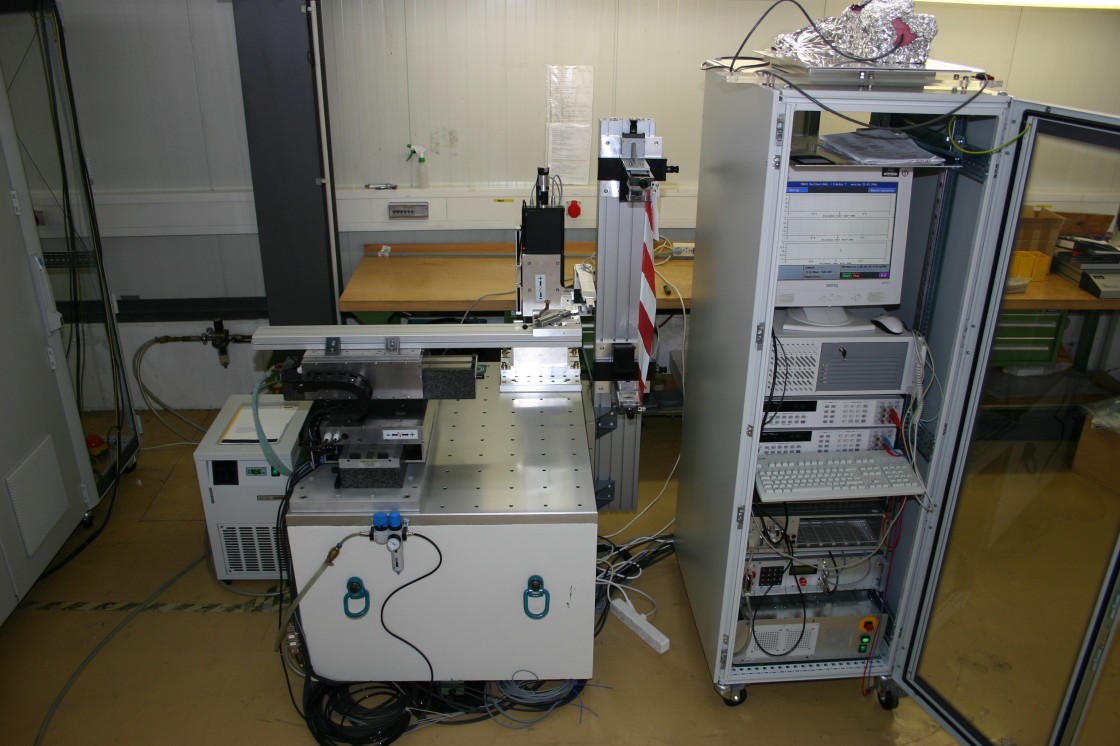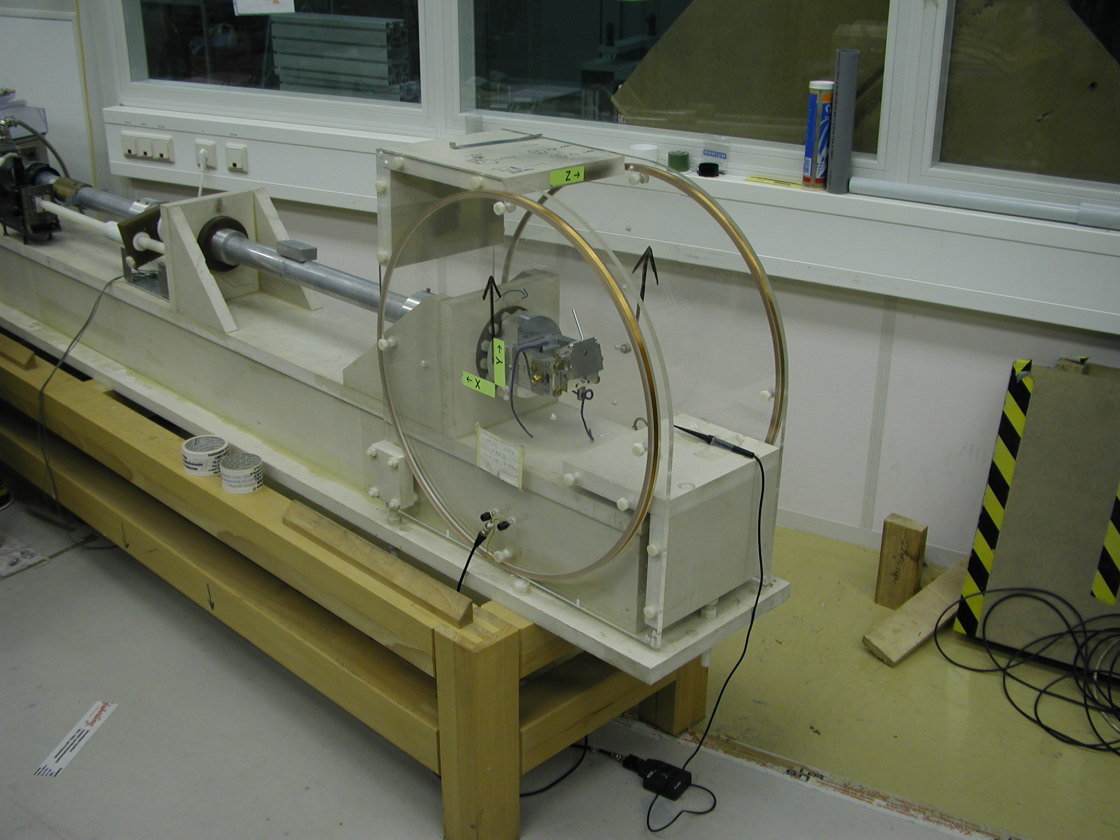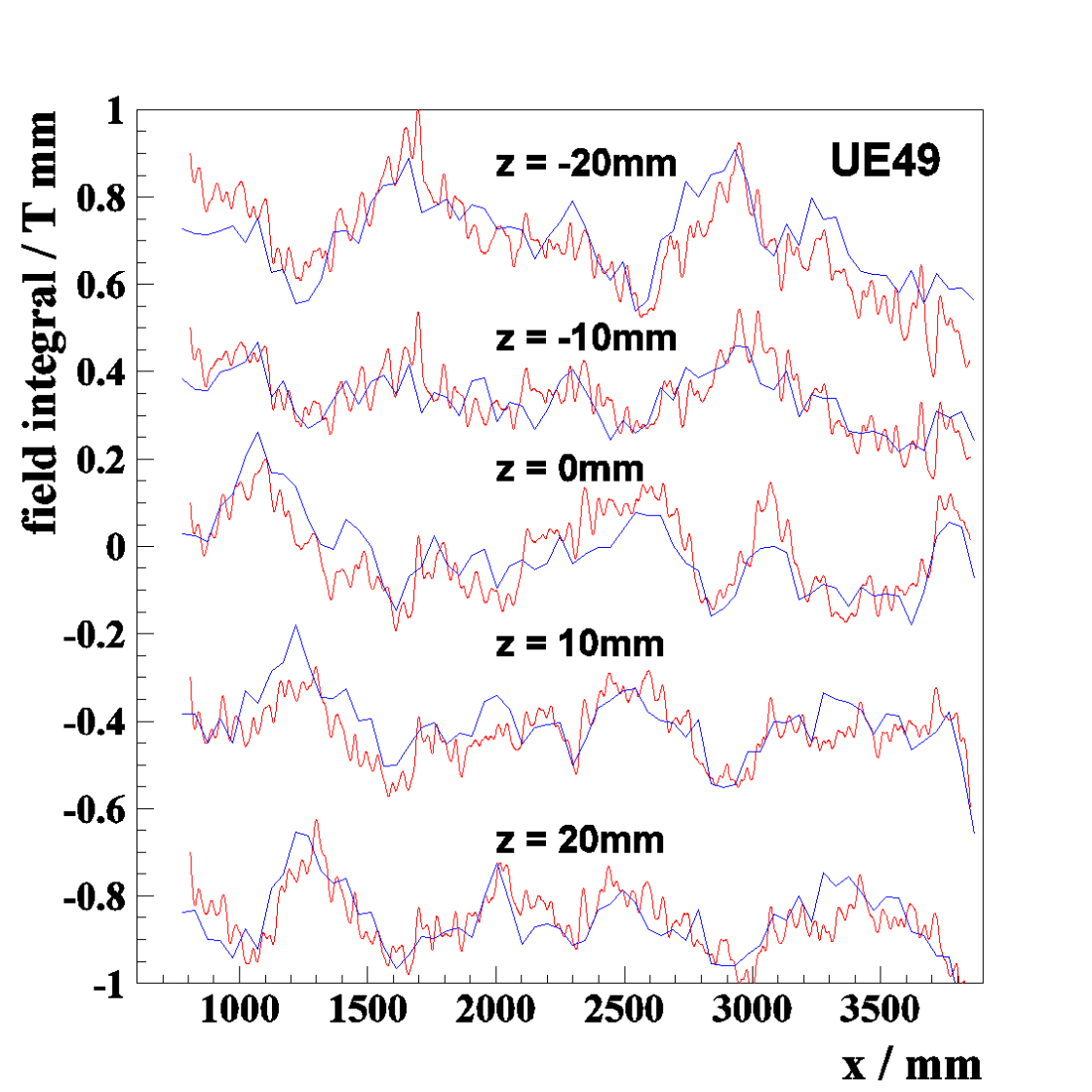Department Undulators
Magnet block characterization and sorting
Single block characterization
Permanent magnet blocks typically have a scatter of the magnetization of the order of 1% and a scatter of the direction of the magnetization of 1°.
To cope with these large values, we characterize each of the ca. 1,000 magnetic blocks of an undulator upon delivery. Dipole moments are measured in an automated Helmholtz coil and the magnet inhomogeneities are measured in a stretched wire system. The obtained data are used to assign each block to a unique position within the magnetic arrays of an undulator using a sorting technique known as simulated annealing.
Fig. 1: Stretched wire system for the characterization of magnet block inhomogeneities. By moving a magnetic block with respect to a stretched out wire (mimicking the electron beam) the induced voltage is representative for the integrated magnetic field. The detection limit is in the range of 5e-4 Tmm.
Fig. 2: Automated Helmholtz coils system for the characterization of individual magnets with respect to their dipole moment. At the center of the coil of radius = 300 mm, there is a precision holder adapted to the geometry of the magnet to be measured which rotates around the horizontal axis perpendicular to the coil axis. A 'flipping' of the magnet by 90° is automatically done. The data are corrected for speed variations and analyzed to yield the absolute value and the orientation of the dipole moment of the magnet.
Magnet sorting
One undulator consists of more than 1000 permanent magnets. Each magnet is characterized with respect to the dipole component and inhomogeneities.
The data are used in a sorting code based on a simulated annealing algorithm. A precise assembly permits guarantees an accurate prediction of field errors of the complete device without further iterations. The quality of an unsorted magnet configuration is one order of magnitude worse as compared to a sorted configuration.
Fig. 3+4: Field integrals at several transverse positions as derived from Hall probe measurements (left, red curve) and field integrals as measured with a moving wire (right, red curve).
The measurements are compared to the predicted values based on single block measurements (blue curves) and unsorted configurations (right, black curve).




